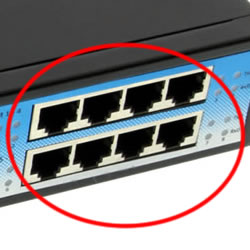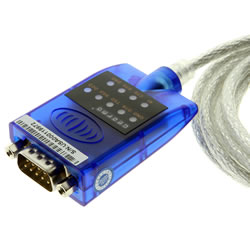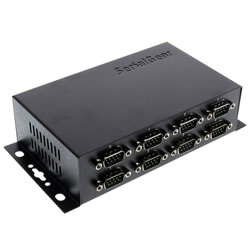Here’s what to think about when choosing your USB Serial Adapter
Have you realized the need for a serial adapter? Maybe your computer doesn’t have a serial port but does have a USB port. USB to serial adapters can be a hard choice, dealing with three different protocols RS232, RS422, and RS485 along with the application you’re using for your communication. Read below for helpful information in guiding you to which serial adapter is right for you.
Determine you serial adapter needs
First things first, take a look at your computer’s architecture; does it already have serial port, or just a USB port, or both?
You need to know what kind of serial adapter you need. If you do not have a serial connection port on your computer, you’ll need to have a USB to serial adapter. This will convert the serial signal you are connected to into a digital signal that your computer will read through the USB cable it is connected to, also known as the host.
USB to Serial Adapter Checklist
- Look at which protocol you need to work with, RS-232, 422, or 485. Your application may require one or more of these protocols.
- Determine how many COM port connections you need, you may need more than one DB-9 port. You could need a one port serial adapter or a 16 port USB to serial adapter.
- Where will you be using the adapter, i.e. home, office, or harsher environments like a warehouse or industrial setting?
- What kind of equipment are you connecting to? Bar code scanner, stenograph machine, medical equipment, or a network. These are examples of equipment used with USB to serial adapters.
- Will you need an adapter with FTDI or Prolific control chip?
USBgear has a large inventory of USB to serial adapters for all applications; all of them support Windows 7 through 10 including Mac OS X and Linux systems. Below is a sample of serial devices we carry.
Explaining Serial Adapter Options
- Our USB to serial adapters have a built-in processing chip that is either FTDI or Prolific. Both chips work with Windows, Mac, or Linux systems. FTDI is the better chip to use over prolific because it’s a more robust and system friendly controller on 32 and 64 bit operating systems. Prolific works but can sometimes have issues during installation. USBgear does have the latest FTDI driver downloads in its website.
- Electrical Protection: Some USB to serial adapters are built with ESD protection or have circuit isolation to protect your equipment from sudden electrical surges. COM port protection is always important regardless of the protocol being used. Your consideration for serial port protection should include the environmental conditions the adapter will be functioning in. Cold, heat, or dry air can certainly increase the chances of electrical shocks to your communication equipment.
- Powering you USB to serial device: Some serial adapters must be powered by an external power supply even though there may be a USB connection. If you have chosen a serial adapter that has a USB cable connected it, your power will come from your computer’s USB port. If you’re working with a single port adapter, this is the easiest type of serial adapter to work with.
- Signal Activity: RS232 data signals include TX, RX, RTS, CTS, DTR, DSR, DCD, RI, and GND, not all of these signals are apparent depending on the adapter, but if you need a visual activity monitor, some serial adapters will show TX, RX activity through an LED. This isn’t a deal breaker for choosing the right adapter but it’s helpful to see signal activity, LEDs can also be used to help troubleshoot issues in your COM port.
- Mounting a Serial Adapter: Does your serial adapter need to be mounted? Most mountable serial adapters are made with a SECC metal chassis. If you’re mounting a serial device, you have options such as DIN Rail or surface mounting. Some USB to serial adapters are large enough to be mounted into a rack for multiple port connections.
- Connections: How is your serial adapter connected? A standard port connection uses a DB-9 pin male or female serial connector. Other industrial type USB serial adapters may use an RJ-45 connector for data signal communication. You’ll also need to look at your USB port; newer computers can contain a USB Type-C port for a host connection. If this is the case, USBgear does have inventory for USB C to serial adapters.
 |
 |
 |
| DB-9 male serial connector is with pins in the connector. | DB-9 female serial connector is without pins but will connect to them. | RJ-45 serial connection can be on a serial adapter or cable. |
USBgear has more articles on USB to serial adapters and their properties, see below:




